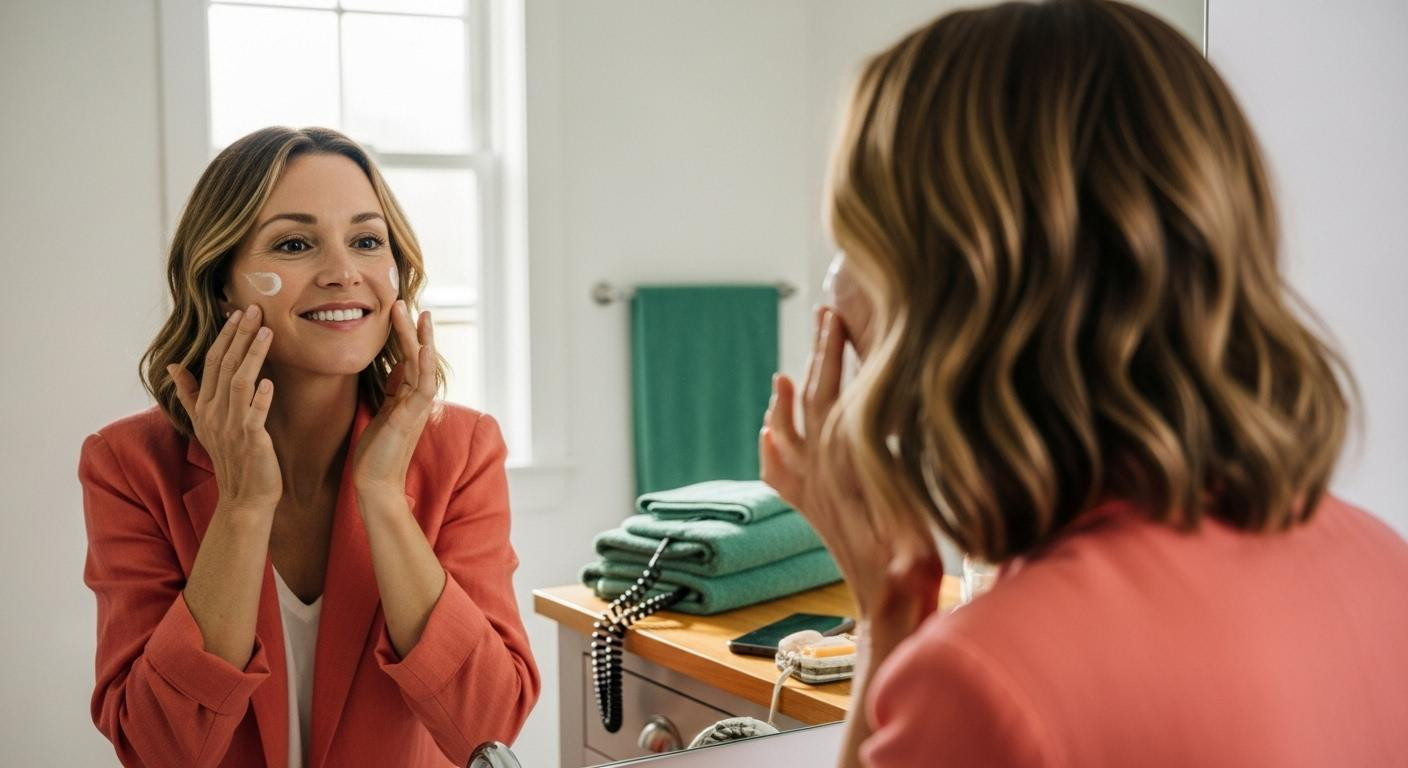October drugstore aisles gleam under fluorescent lights. Rows of moisturizers promise miracles in colorful tubes. You’ve tested six brands this year alone. Some absorb too quickly, leaving skin dry by noon. Others create greasy residue that stains pillowcases. Yet one blue tub persists on dermatologists’ shelves decade after decade. Not because of marketing budgets or celebrity endorsements. Because of invisible barrier science most brands ignore. CeraVe’s dominance isn’t accidental. It’s architectural.
Three specific ceramides work in construction-crew precision. This explains why over 10,000 dermatologists recommend what costs less than lunch.
Your skin barrier isn’t broken, it’s missing 3 critical building blocks
Picture your skin barrier as brick-and-mortar construction. Skin cells form bricks. Lipids, including ceramides, create mortar between them. Most drugstore creams add water for temporary inflation. They don’t repair mortar gaps where moisture escapes.
CeraVe’s innovation delivers three specific ceramide types corresponding to three barrier layers. This tri-ceramide approach addresses aging skin’s fundamental needs more comprehensively than single-ceramide competitors.
Ceramide 1 forms the outer defense layer
This ceramide prevents water loss from skin surface. Its absence causes immediate dryness after washing. Drugstore alternatives often skip this crucial component, focusing only on surface hydration.
Ceramide 3 maintains the middle stability layer
This ceramide preserves barrier flexibility. It prevents cracking that leads to irritation and moisture escape. Aging skin particularly benefits from this structural reinforcement as natural production declines by 40% between ages 20-80.
Ceramide 6-II drives deep repair layer function
This ceramide promotes skin cell renewal. It matters crucially for aging skin’s slowed turnover rate. According to dermatologists specializing in barrier repair, this ceramide type addresses the foundation of visible aging signs caused by compromised barrier function.
Why your $45 hyaluronic acid serum fails by afternoon
Hyaluronic acid attracts 1000 times its weight in water. Sounds miraculous on paper. The problem lies in attraction without retention. This creates dependency where you reapply every four hours. Nothing actually fixes underlying barrier damage.
How CeraVe combines both mechanisms
Hyaluronic acid provides surface attraction. Ceramides deliver barrier retention. Together they achieve 24-hour hydration through physiological necessity, not marketing exaggeration. This dual-action approach explains why CeraVe succeeds where expensive serums fail.
The MVE technology advantage nobody explains
Multivesicular Emulsion creates microscopic onion-like layers. These slowly release ingredients over time rather than dumping everything immediately. Standard creams feel good for two hours, then crash. MVE’s sustained release prevents the reapplication trap that keeps customers buying more product.
Clinical testing confirms this time-release system maintains hydration levels throughout full 24-hour periods. Laboratory analysis validates this technology’s superior performance against conventional formulations.
Why dermatologists choose CeraVe for eczema patients
National Eczema Association acceptance requires specific criteria. Fragrance-free, hypoallergenic, and non-comedogenic aren’t just checkboxes. They’re formulation constraints eliminating 80% of competitors from consideration for sensitive aging skin.
The non-comedogenic science behind thick texture
Thick consistency doesn’t equal pore-clogging. Molecular size and lipid composition matter more than texture feel. Comedogenicity testing protocols examine how ingredients interact with sebaceous glands. CeraVe’s pharmaceutical-grade ceramides pass these rigorous clinical standards despite rich texture.
Why developed with dermatologists actually means something here
Many brands use this phrase as marketing fluff. CeraVe’s co-founder was a practicing dermatologist. Formulations address actual clinical observations from treating barrier dysfunction. Professional endorsements stem from evidence-based treatment results, not promotional partnerships.
The formula works on face, body, and hands without reformulation. This versatility matters for aging skin requiring consistent barrier repair across all areas.
The $15 versus $180 question science actually answers
Luxury creams often add fragrance and exotic botanicals with minimal efficacy. They prioritize elegant textures over barrier repair. None repair barriers better than pharmaceutical-grade ceramides at CeraVe’s concentration levels.
Research from dermatology journals confirms that effective barrier repair depends on ceramide delivery, not price point. Luxury creams offer experiential value through ritual and scent. They don’t deliver superior barrier reconstruction for aging skin’s fundamental needs.
CeraVe represents unsexy science that actually works. For readers prioritizing function over experience, this matters more than prestigious packaging. Consistent results trump luxury marketing every time.
Your questions about why CeraVe moisturizing cream still reigns supreme in U.S. drugstores answered
Why doesn’t CeraVe work for everyone if it’s so scientifically sound?
Application method issues often cause problems. Apply to slightly damp skin for enhanced absorption. Use sufficient quantity. Barrier repair takes 2-4 weeks for visible results. Some cases need additional treatments like prescription retinoids or gentle exfoliation alongside moisturizer use.
How does CeraVe compare to Korean barrier-repair creams gaining U.S. popularity?
K-beauty innovations include fermented ingredients and centella asiatica. Many now incorporate ceramides too, validating CeraVe’s original approach. CeraVe pioneered accessible ceramide delivery in U.S. markets. International brands confirm this scientific foundation while adding cultural skincare preferences.
Should I use CeraVe moisturizing cream or lotion for maximum effectiveness?
The 19-ounce tub cream contains higher lipid concentrations for severe dryness. Lotion offers lighter texture for normal-to-dry skin. Both contain identical ceramides and MVE technology. Choice depends on barrier damage severity, not product superiority.
October evening arrives as you smooth CeraVe across wind-chapped hands. No immediate tingle or jasmine scent signals luxury. Just microscopic ceramides slipping into mortar gaps. MVE layers prepare tomorrow’s reinforcements through unglamorous repair work. By morning, your skin remembers what comfortable means.
